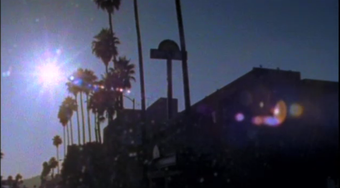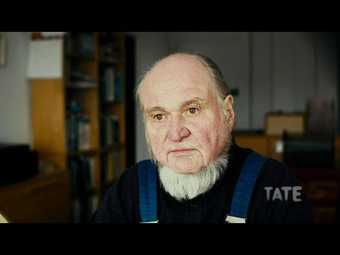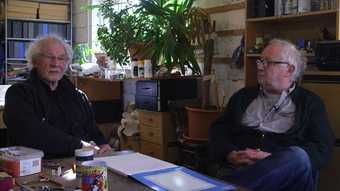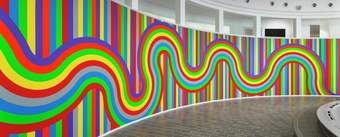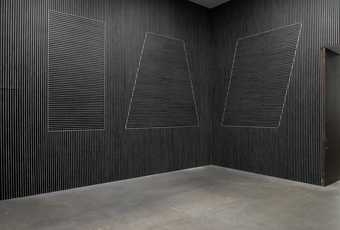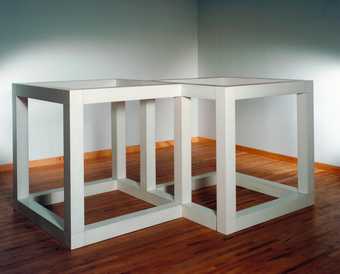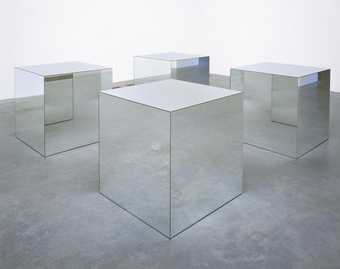JZ: I’m Jeremy Zeeman. I’m and artist and was a long-time assistant, fabricator and collaborator with Sol LeWitt. We’re in his studio here in Chester, Connecticut. Mostly I would meet with him in the studio and talk about a project that he wanted me to work on for him or something that we were working on. Sol often presented projects to me that were…I felt they were very clear to understand but there was also a lot of interpretation for me in the process of fabrication and that was left for me to do on my own. He liked the way I fabricated things and I synced up well with what his vision was for work. So, I wasn’t really taking… I wasn’t stretching the work in any way, I really…I don’t think I was trying to modify but I was really trying to exact in a certain way.
F1: It’s important to know that Sol always worked in his studio. Many people have a perception of him that because he gave instructions to his wall drawing assistants and they would execute his drawings on the walls of museums and galleries, people often assumed that he didn’t actually do work himself but he worked every day, six or seven days a week in his studio and he made all the plans, drew all the plans for the wall drawings that he would give to his assistants, all the plans for fabrication for his structures and he also made gouaches.
Sol produced what has been called conceptual and minimalist art which was taking very, very basic elements of art such as the line, a horizontal line, a vertical line and diagonal, right diagonal, left lines and making drawings that played out all the combinations. He used geometric figures in his work. They were sort of the basics of geometry but also the basics of painting and drawing. Sol made his working drawings sitting at that desk so often times you come in in the morning, he had a phone behind him which is now gone, and he might be sitting at his desk with his tools making drawings of the type that we just saw on the bulletin board, the plans for his wall drawings and structures.
JZ: But then every day he sort of had hands on without instructing others and that was working on the gouaches.
F1: Sol was very, very prolific. He made hundreds of works of art a year. I remember one summer that we got 260 gouaches came in on a container in the fall, all that he had made in the summer.
JZ: Sol very often communicated with me the effects. Often it would be a small rendering or a plan for something that he wanted me to build or a question or if I was installing something in Europe I would…and I was done at six o’clock in the morning this time I would send him a fax saying, this is where we are with the project, I’ll update with you later. I was developing some renderings for scribble drawings that he was doing and we had a discussion about how he wanted them to look kind of like this and I would take his sketch, that he would fax me and then convert it to this and then this is what the real piece looked like when it was in the museum. Well, just having been in this studio again I just, to me it feels like everything’s the same except he’s not here and the music’s not playing and it was very easy for me to just come in, see him and he was, welcomed me at any time whether it was the studio or his house.

